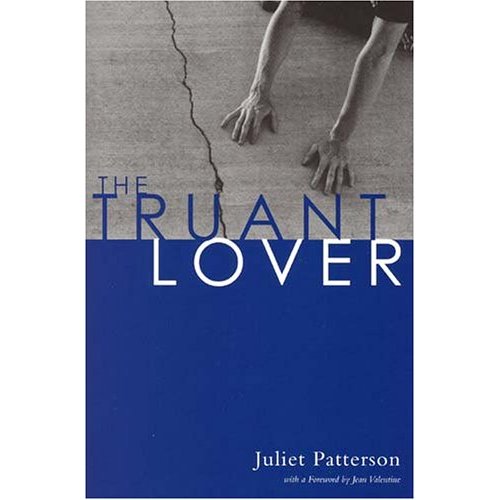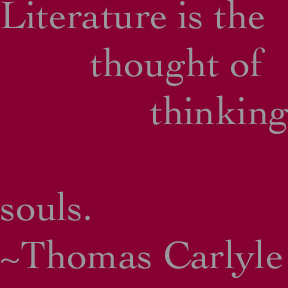Thinking Souls: The Truant Lover
Shannon Gibney notes that Juliet Patterson's book "The Truant Lover" is not extravagant; also, that it's not to be missed.


The Truant Lover (Nightboat Books, 2006), Juliet Patterson’s debut poetry collection, is a meaty meditation for this season of solstice. While I don’t imagine that Patterson wrote the book for this purpose, I nevertheless enjoyed the satisfying symmetry of the life of the natural world and the life of the page – a relationship that Patterson seems preoccupied with herself.
The eye-white, sky
of river kissed.
Maybe another way of saying,
I built my house to my desire.
Pines above the shingles.
Star-like, flame,
my hands & the river sluice hinging
an open door or bed.
Simply the river quicker than rock, a house &
the old cracked boat
-hulk, trees where I pass till a star
show it’s gone when it snows.
Eye & knocking heart can bless
the hulk dragging estuary.
The treeline giving way
to only motion, only speech
(The Truant Lover, 53-54).
In this, the second half of “Palinode,” we see the spareness of the winter landscape reflected in the shape of the poem itself. What is of interest in this poem, as in many others in the collection, is how much space is left to be just that – space – on the page.
There is a kind of communion here, between what is said and what is not said, that reminds the reader of walking through the very December fields that Patterson describes, noting the dry, brittle landscape and yet–and also–the spry and determined life that persists within it. And then we’re shown a second communion, this one between the natural world, the human body, and the limits of language in describing and understanding either one.
“Opening of a Burr” takes this question one step further, by noting that the human mind, and everything that we have created with it, including language, are merely natural and biological, and will therefore die, and then transform into some new biology:
The owls confined to hunting the freeway’s median
suggest we’re apt to turn unforgiving points
on ourselves. We skid past them,
the brain dropping letters in falling snow,
picking up speed, breaking into box-
elder. A mantle of snow covers all
of its branches. Mind wired: trunk, appetite,
bird. Each thing ending moves quickly
to the next, a neologism of “never” proving the soul is not pathology
but nature & the globe of cranium mere instrument
for getting fruit, teaching periphery”
(The Truant Lover, 59).
Patterson’s poems don’t all deal with such serious matters, however. Many, such as “Narrative,” are both whimsical and witty – celebrating the vicissitudes and absurdities of life and language:
Origami swans floating in the toilet.
The principles of gravity. She is talking
& talking.
A carton of owls on the floor.
Eating Thai food.
Won-ton, wanton.
Everything blushing, failing, fading.
…At a bare minimum, the clock on the wall says three.
A bowl of plum sauce bathed in light.
Swans scattered like toys.
This is obviously about a person alone.
In another version, I was her wife.
I shall be her wife”
(The Truant Lover, 13-14).
This playfulness is also expressed in “Index of First Lines”:
A slash of blue
Asphalt / colorless
Again the cry that
But she is / a stranger yet
By the time you read this
Coming late, as always
Darling,
Dear
Dear / I could / send you
Dear / I would / have liked
Dear friend / I regret to inform you
For love we all go
(The Truant Lover, 15).
Although The Truant Lover’s delights are neither extravagant nor lush, they are indeed bountiful, and should not be missed. The quiet poems the book contains are more like finely chiseled ice sculptures than gleaming, luxurious gems. But the truth they express is no less radiant – in fact, it may be even more so, borne as it is out of a season of less rather than plenty.
Pick up a copy of The Truant Lover at Magers and Quinn Booksellers. For more information on Juliet Patterson, or her work, visit www.julietpatterson.com.
Next Month:We talk with Abigail Garner about what it takes to get marginalized voices into public discourse, as we explore her book Families Like Mine: Children of Gay Parents Tell It Like It Is (HarperCollins, 2004).